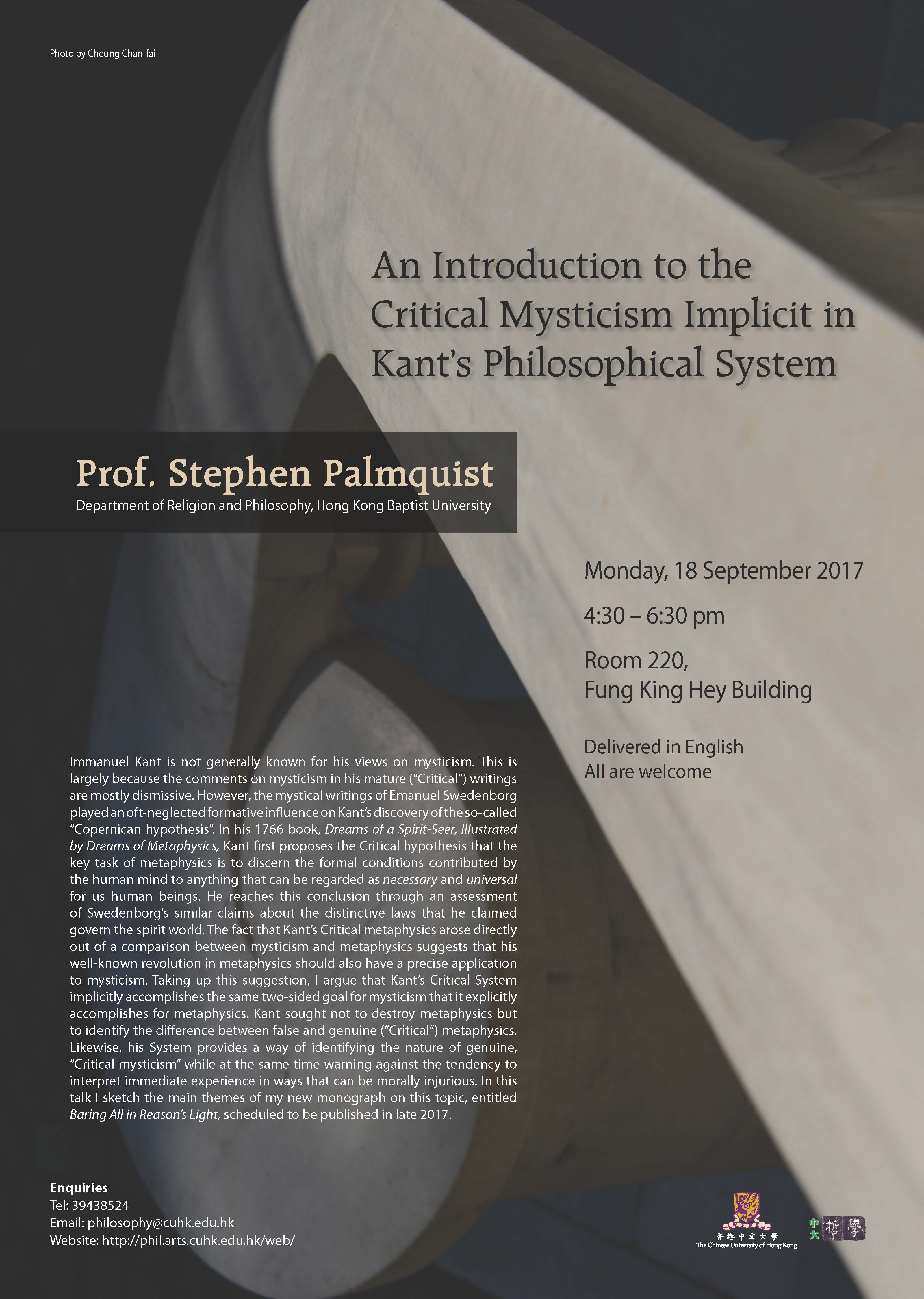An Introduction to the Critical Mysticism Implicit in Kant’s Philosophical System

Prof. Stephen Palmquist, Department of Religion and Philosophy, Hong Kong Baptist University |
|
4:30 – 6:30 pm |
|
香港中文大學馮景禧樓220室 |
簡歷
Stephen Palmquist (D.Phil., Oxford University) is Professor of Religion and Philosophy at Hong Kong Baptist University, where he has taught since 1987. He has over 175 publications (translated into at least 12 languages), which include 90+ refereed articles and book chapters, published in more than 25 countries. Among his 11 books are The Tree of Philosophy (1992/2000), Kant’s System of Perspectives (1993), Kant’s Critical Religion (2000), Cultivating Personhood: Kant and Asian Philosophy (2010), Comprehensive Commentary on Kant’s Religion within the Bounds of Bare Reason (2016), and Baring All in Reason’s Light: An Exposition and Defense of Kant’s Critical Mysticism (2017). In 1999 he founded the Hong Kong Philosophy Café, now comprising four branches and over 800 members.
摘要:
Immanuel Kant is not generally known for his views on mysticism. This is largely because the comments on mysticism in his mature (“Critical”) writings are mostly dismissive. However, the mystical writings of Emanuel Swedenborg played an oft-neglected formative influence on Kant’s discovery of the so-called “Copernican hypothesis”. In his 1766 book, Dreams of a Spirit-Seer, Illustrated by Dreams of Metaphysics, Kant first proposes the Critical hypothesis that the key task of metaphysics is to discern the formal conditions contributed by the human mind to anything that can be regarded as necessary and universal for us human beings. He reaches this conclusion through an assessment of Swedenborg’s similar claims about the distinctive laws that he claimed govern the spirit world. The fact that Kant’s Critical metaphysics arose directly out of a comparison between mysticism and metaphysics suggests that his well-known revolution in metaphysics should also have a precise application to mysticism. Taking up this suggestion, I argue that Kant’s Critical System implicitly accomplishes the same two-sided goal for mysticism that it explicitly accomplishes for metaphysics. Kant sought not to destroy metaphysics but to identify the difference between false and genuine (“Critical”) metaphysics. Likewise, his System provides a way of identifying the nature of genuine, “Critical mysticism” while at the same time warning against the tendency to interpret immediate experience in ways that can be morally injurious. In this talk I sketch the main themes of my new monograph on this topic, entitled Baring All in Reason’s Light, scheduled to be published in late 2017.




